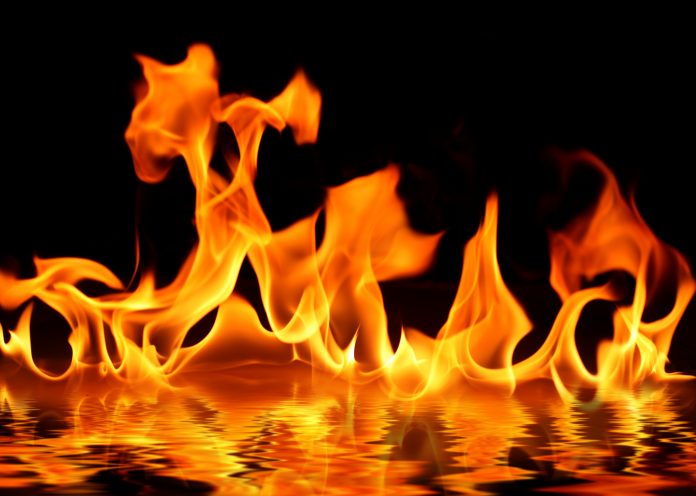Derek Killaspy, Managing Director of Fireworks Ltd, explores why data centres are moving to high pressure water mist fire suppression systems
This article sets out the advantages of high pressure water mist (HPWM) fire suppression for data centres, particularly with regards to its smoke mitigation properties and ability to provide a localised solution which enables business continuity during a fire.
Most data centres have already turned away from gas-based fire solutions – but not all are yet fully informed about the comparative benefits between sprinkler systems, low pressure water mist and high pressure water mist. Of these three water-based systems, high pressure water mist is the most performant in terms of temperature cooling and fire suppression capabilities, particularly in fires involving electrical materials.
The key advantage, which places it above any other fire suppression system, is the ability of high pressure water mist to absorb and prevent the spread of smoke.
Smoke damage continues after the fire
During data centre fires, smoke is the biggest cause of damage and operational failure. Smoke carries a cocktail of corrosive chemicals produced by burning combustibles, such as cables and electronic components. These by-products can include hydrogen chloride, hydrogen cyanide, sulphur dioxide and nitrogen dioxide, among others. The damage is both physical and chemical.
Smoke particles from fire travel fast, at around 10 metres per second, and can quickly fill a room or data centre hall. Under the microscope, these particles have jagged edges. As they spread through the air and enter servers and other equipment, these minute fragments cause scratching and damage.

Unfortunately, the deterioration does not stop there. Smoke settles on all surfaces of data centre equipment, even after the fire is extinguished, leaving a residue. Micro-pitting begins to occur on metal surfaces and although cleaning operations may initially look successful, the smoke residue that remains continues to react with moisture in the air, causing corrosion. Isolated faults typically begin to appear within a few days and can develop into much larger problems over time.
Let’s not forget either, that smoke is also the biggest cause of death in fires. The fast suppression of smoke is, therefore, crucial for business continuity. So what is the best solution?
How high pressure water mist works
Among all the fire suppression solutions available, high pressure water mist is the only one to effectively remove smoke from the fire and prevent it from spreading.
HPWM uses a system of high-pressure pumps, valves, pipes and nozzles to deliver a spray of micro-fine water droplets, directly to the source of the fire. Within each nozzle is a heat-sensitive bulb which melts when temperatures reach a predefined point. The nozzle bulb triggers the automatic activation of the pump, which forces water through the nozzle heads at between 60 to 100 bar, depending on the nozzle type. As only nozzles with melted bulbs are activated, water mist delivery is localised to the heat-affected area.
With high pressure water mist, the water droplets range from 50 to 200 µm – approximately 1000th of the size of a regular drop of water. The atomised droplets are drawn to the base of the fire, expanding in volume and transforming into steam. This steam rapidly reduces the temperature around the fire thanks to its heat absorbing properties – and forces oxygen away from the flames. Without heat and oxygen – two of the essential elements a fire needs to continue – the fire is suppressed quickly and reignition is prevented.
Above all, high pressure water mist has unique smoke neutralisation properties we mentioned earlier. Smoke particles combine with the atomised water particles, falling harmlessly to the ground. This action dramatically reduces smoke damage to equipment and provides a survivable environment for any personnel that may be in the building.
Data centre continuity
High pressure water mist is the most locally acting fire suppression solution, allowing the remainder of the data centre’s operations and equipment to be kept up and running even during fire suppression. As the system has much lower water requirements than either sprinkler or low pressure water mist, hardly any traces of water remain after activation.
Areas do not need to be sealed off, and power and HVAC continue to run during fire suppression. Moreover, HPWM is proven in tests from independent standards bodies, not to affect the smooth-running of computers and servers in operation, even when in use for up to 30 minutes.
Proven experience in data centres
At Fireworks we have been designing and installing high pressure water mist systems in a variety of critical sectors, for 25 years. We were the first company in the UK to install high-pressure water mist solutions for data centres, nearly two decades ago. In partnership with Danfoss, supplier of SEM-SAFE high-pressure water mist equipment, we have designed, deployed and maintained systems in several major data centres – private, public and government-operated. The Danfoss SEM-SAFE systems that we work have obtained a wide range of testing approval certifications from European, U.S. and global standards organisations, including the FM5560 and BS8489 standards relating to datacentres.
To find out more about examples of high pressure water mist systems installed in data centres, contact +44 (0)207 205 5793, enquiries@fireworks-ltd.com or visit www.fireworks-ltd.com for more information. Fireworks and Danfoss were present on stand D456 during Data Centre World on 11th and 12th March 2020.

*Please note: This is a commercial profile











